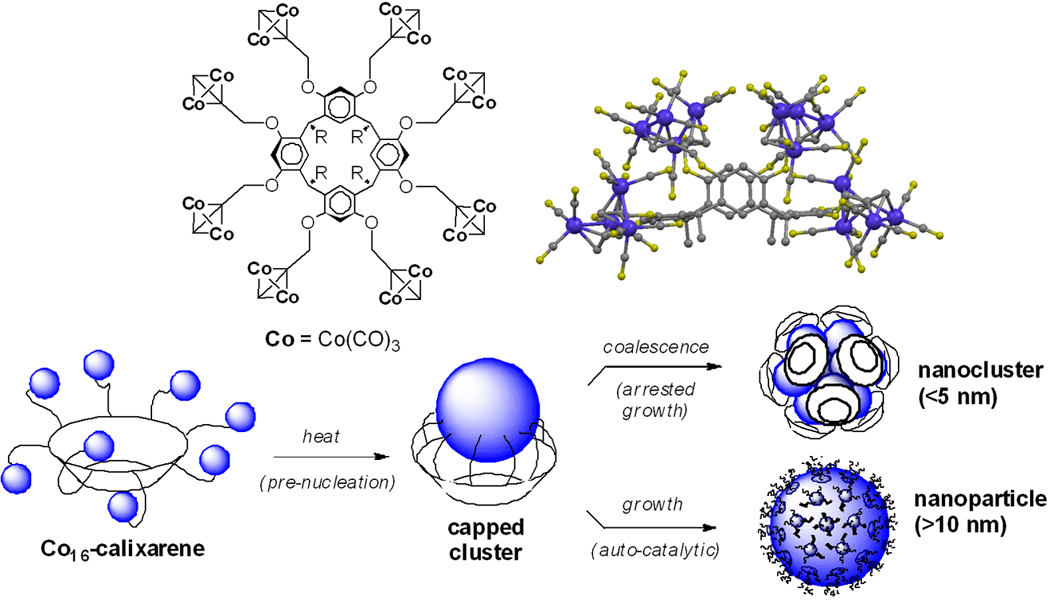Self-Assembly & Growth of Magnetic Nanorings
Magnetic rings have a rich history in nonvolatile memory applications, due to their ability to support bistable vortex or flux closure (FC) states. These FC states can be switched by circularly polarized magnetic fields, such as those produced by current-carrying wires passing through the ring axis. We have prepared nanosized magnetic rings by nanoparticle self-assembly, and studied the field-induced switching of their FC states.
We have found that thermoremanent cobalt nanoparticles (Co NPs) can self-assemble into magnetic rings less than 100 nm in diameter, and are capable of supporting chiral FC states at room temperature. The latter have been visualized by electron holography (collaboration with Takeshi Kasama & Rafal Dunin-Borkowski, Techn. Univ. Denmark), an electron microscopy technique that can image magnetic flux with nanometer resolution. This method has also revealed that the FC states in Co NP rings can be switched by coaxial magnetic pulses.

Magnetic flux closure (FC) states in self-assembled Co nanorings, imaged by electron holography.
We are also interested in the templated synthesis of Co nanorings on surfaces using conformal growth mechanisms, which requires deeper insight into nucleation and growth kinetics. We have established a model demonstrating molecular control over (pre)nucleation, based on the controlled thermolysis of polynuclear cobalt clusters into capped cluster intermediates, supported by multivalent calixarene ligands. The development of novel growth reagents enables independent control over nucleation and growth.

Polynuclear Co-calixarene complex as a nucleating agent for Co NP growth.